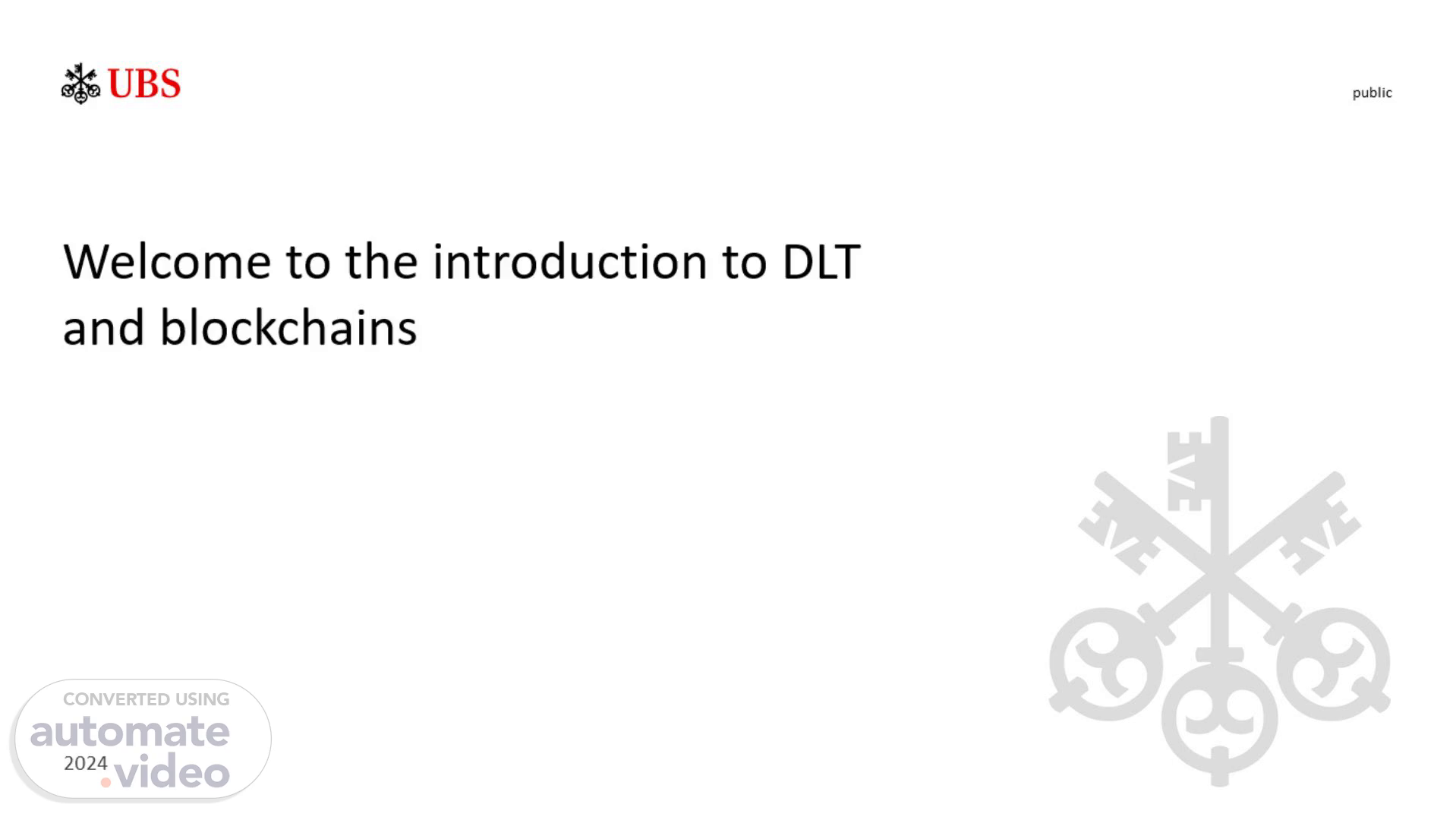
Page 1 (0s)
[Virtual Presenter] Welcome to the introduction to DLT and blockchains. In the following 2 to 3 minutes you will learn what the difference is and a simple example will provide a first explanation how DLT and blockchains work..
Page 2 (17s)
[Audio] The terms distributed ledger technology (DLT) and blockchain are often used interchangeably, but actually they are not the same. A blockchain, a chain of blocks, is a type of DLT. A blockchain thus is one branch of a tree called DLT, a tree which is much older than blockchains are. Clear? Confused? Let's take this apart to start building a foundation of understanding. And we start with the tree, we start with digital ledger technology..
Page 3 (46s)
[Audio] Distributed ledger technology builds upon the concept of decentralization. Instead of having a central party like a person, a company or a system in charge to keep track of activities like transactions and record keeping in decentralization ways have to be found to distribute this responsibility. Today when we say DLT, we usually mean a technical system such as a decentralized database that is used and managed by various participants in a network..
Page 4 (1m 17s)
[Audio] Especially if different participants with different interests and stakes come into the picture, then many questions come up. How can I be sure that my activities, my transactions, my ownership and overall the records are represented correctly? How can I be sure that no other participant commits fraud by for instance changing the book of record or changing ownership records? Or using the data where I don't want it be used? And so on. These concerns lead to multiple needs, which put simply can be summarized as trust needs: What needs to be in place so that I can trust the system?.
Page 5 (1m 52s)
[Audio] In a central system the participants have to trust the central party and especially in highly regulated industries such as finance multiple players hold roles to help protect the participants and help them building up trust into the system. Regulation is one such element..
Page 6 (2m 10s)
[Audio] In DLT systems without central authorities acting as arbitrator, the role to address the needs of the participants is especially filled by technology. The distributed log of records and the resulting transparency is a key element, making fraud and manipulation more difficult. Different validation methods to ensure consensus that transactions and records are legit. But more to this later..
Page 7 (2m 36s)
[Audio] As a summary, DLT today allows for implementations that have the potential to transform the way we conduct transactions and manage data. And due to its most famous blockchain application, Bitcoin, it has gained widespread attention in recent years. In the next modules we'll look closer at how blockchains work and especially at Bitcoin and Ethereum. Thank you for staying with us in this module..